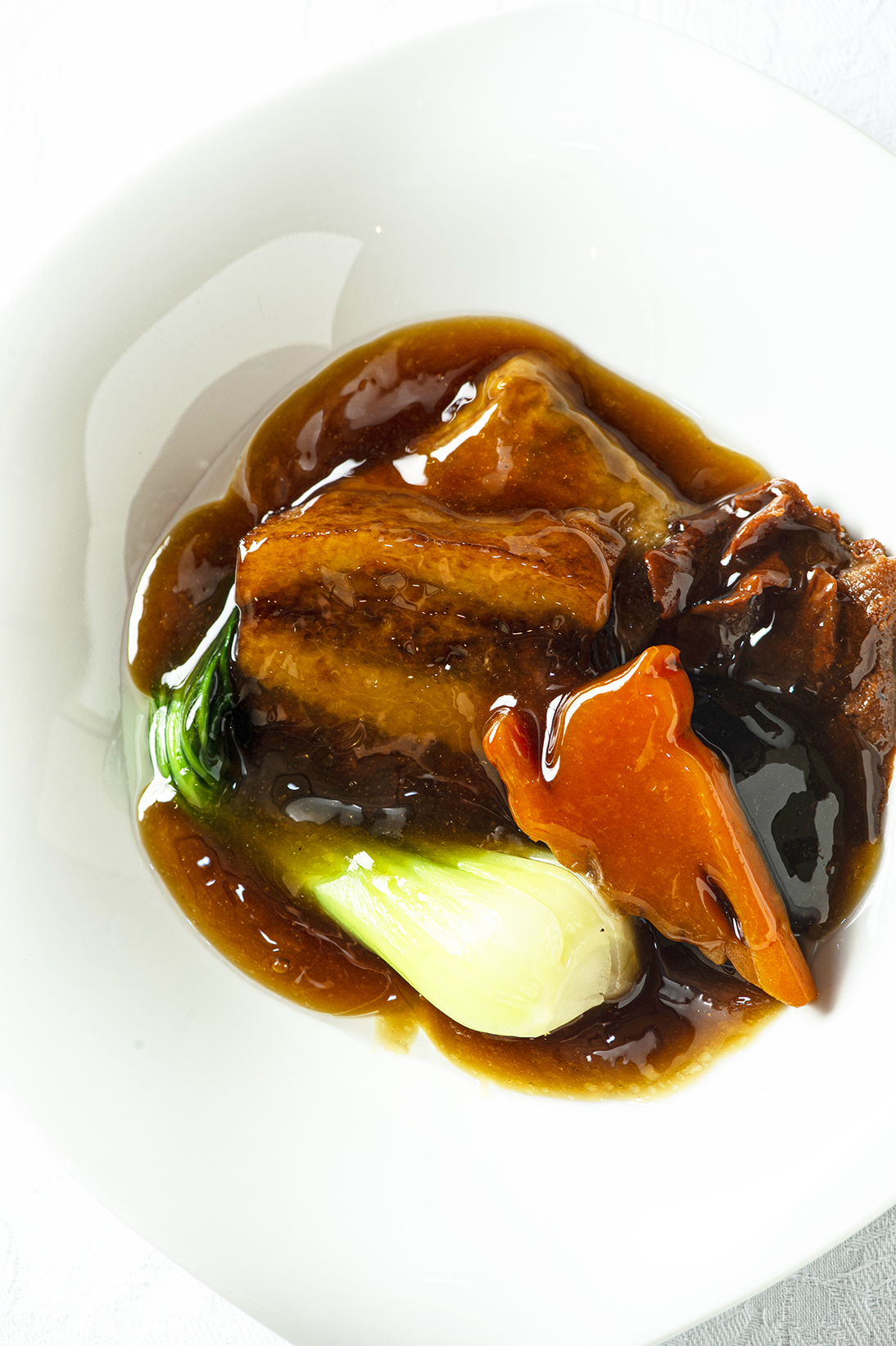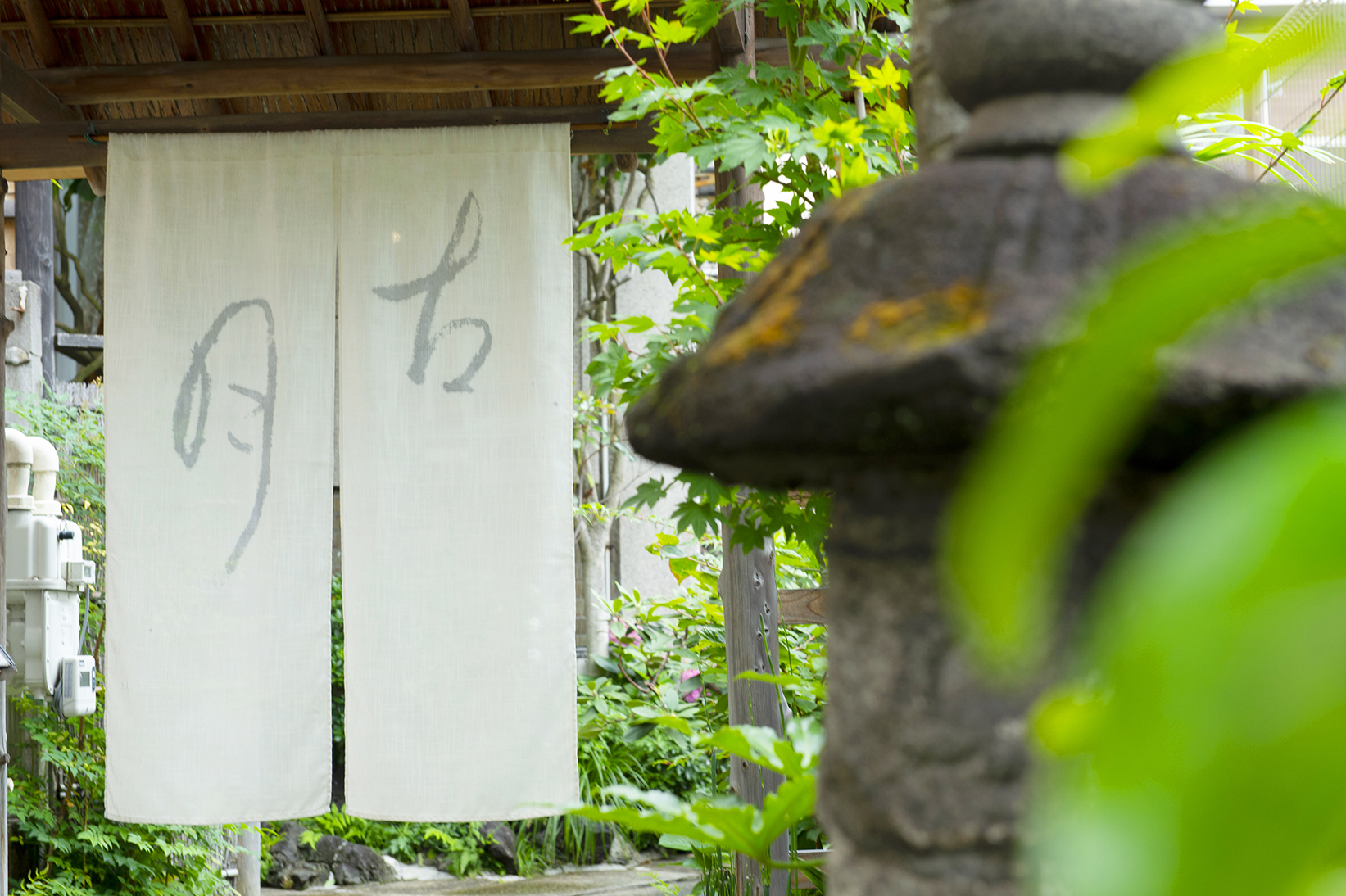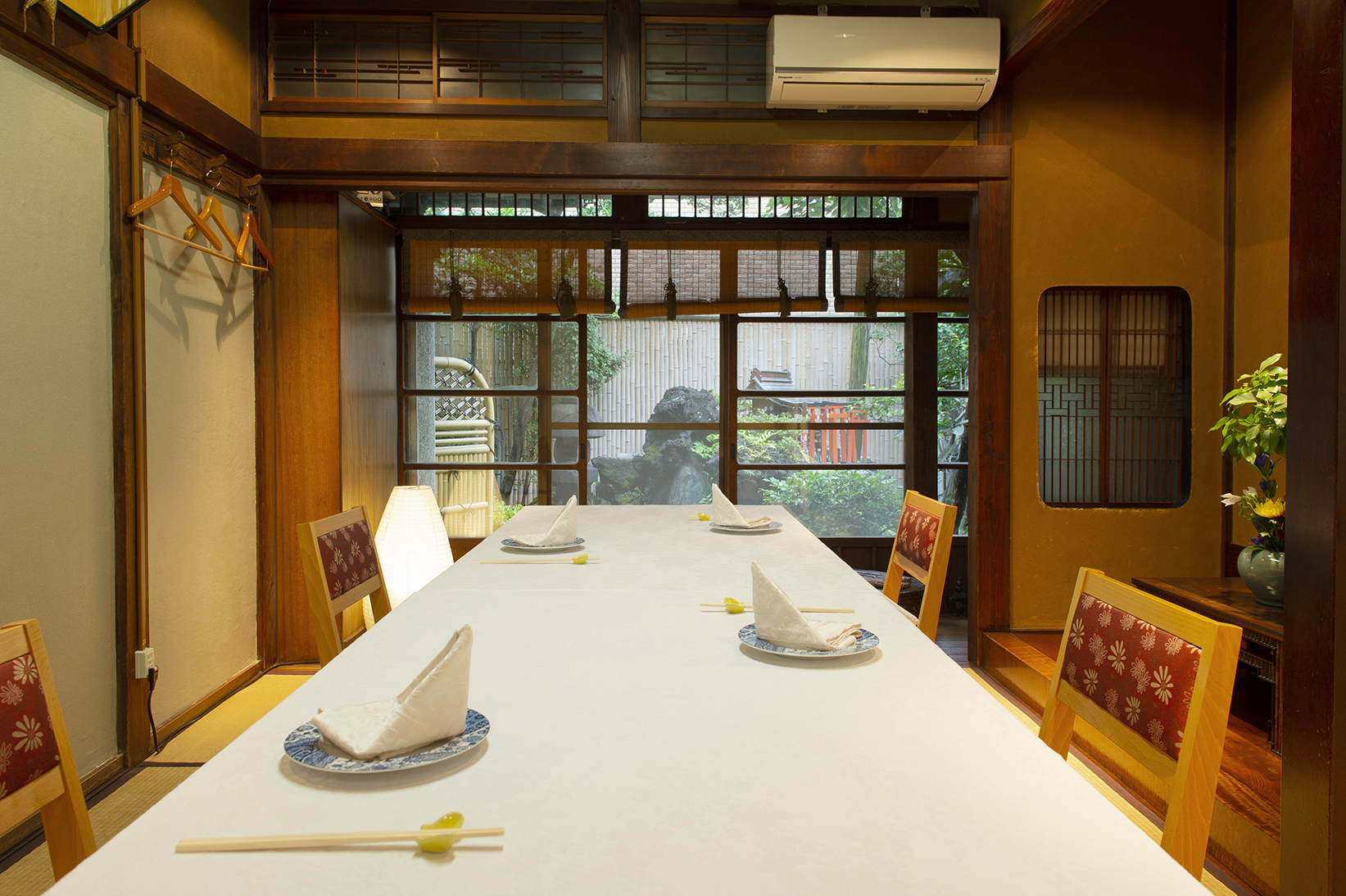Everyone will get an impression of "Glossy rich brown" when Chinese-style braised pork belly, known as Dongpo pork, is served.
This is the vegan dish 'Shojin Pork Belly Stew' created by Chef Kazuo Yamanaka, owner of the Chinese restaurant 'Kogetsu Ikenohata Honten' located in Ikenohata, Tokyo.
The thick fatty layer of pork belly has a gelatinous sticky texture, and the lean meat is moist and soft, served with a thick and flavorful sweet and spicy sauce. The texture and taste are exactly like Dongpo pork!
However, it implies that only plant-based ingredients are used as it is a vegan dish. What exactly are the ingredients of this 'Shojin Pork Belly Stew'?
Let's dig into this fulfilling portion and appealing dish with Chingensai (Chinese cabbage), Yuba rolls, shiitake mushrooms, Nikawaurokotake (mushroom), and phoenix cut carrots.
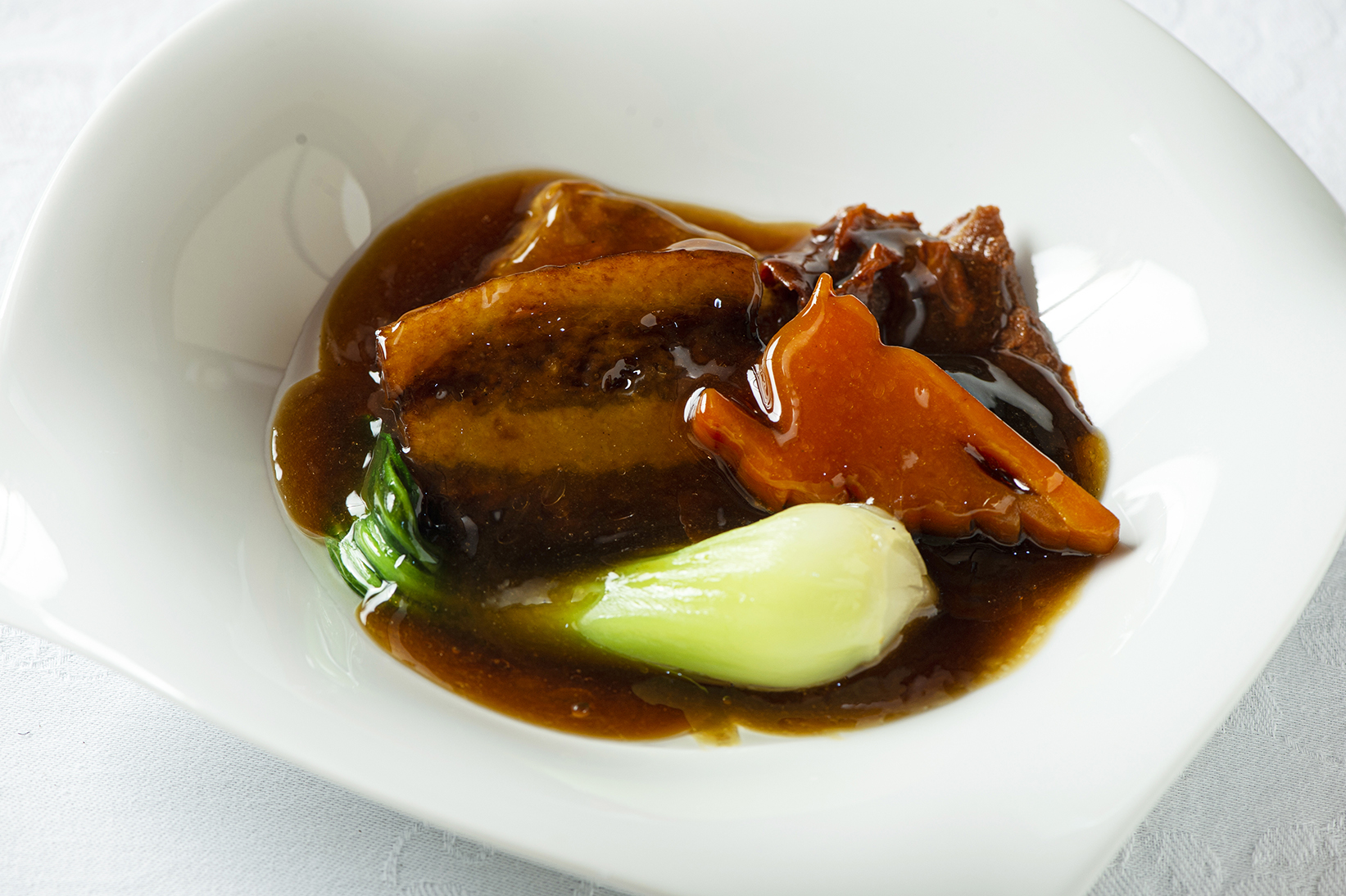
Deep taste of veggies in one plate
- Restaurant name
-
Kogetsu Ikenohata Honten
- Genre
-
Chinese cuisine
- A dish of goodness
-
Shojin (Buddhist cuisine) stewed belly meat
Various roles with its diverse texture
the indispensable power of wheat bran in Shojin cuisine
the indispensable power of wheat bran in Shojin cuisine
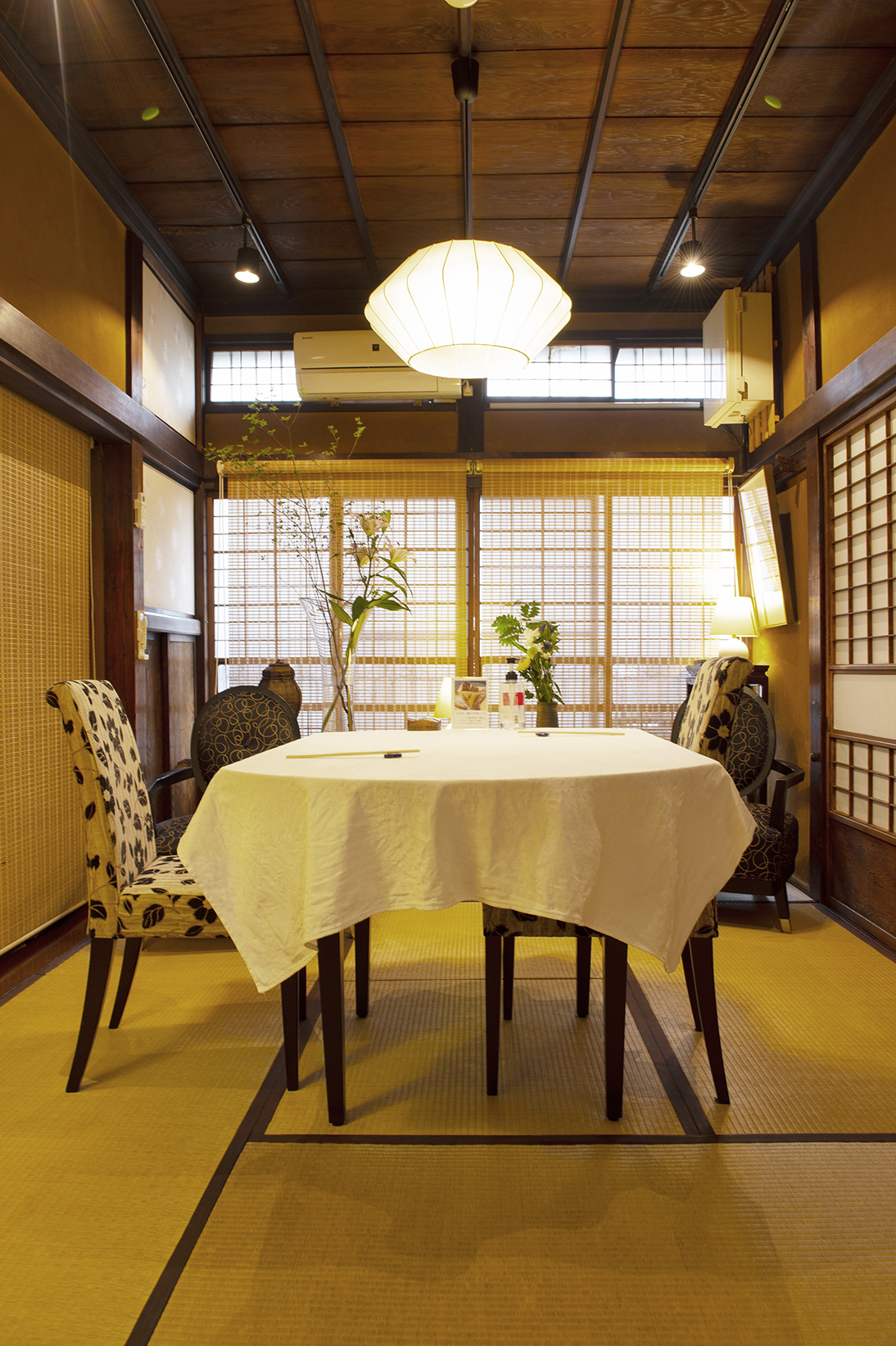
The 'Shojin Pork Belly Stew' is served as the main dish in the Vegan (Authentic Shojin) Course Dinner (7 courses) - ¥14,000 and Lunch (5 courses) - ¥6,500 (both tax included). Reservations required at least 3 days in advance.
The Vegan Course is served in the charming private room of a traditional Japanese house style, dishes are served one by one. Particularly for this main dish, it will be served by only announcing its dish name and the ingredients will not be revealed until asked by guests.
When asked, the waiter reveals that is made from wheat bran.
Wheat bran is believed to have been introduced to Japan from China with Buddhism, it's a crucial ingredient in Buddhist cuisine, and is treated as a main ingredient. However, the gelatinous fatty pork fat and the meat-like fibrous texture amaze guests, as they won't believe it is made with wheat bran!
When you hear wheat bran, you might first think of dried wheat brann such as handball-shaped for decoration or petal-like wheat bran used in soups, or 'Kuruma-bu' with a hollow center. However, we use 'Namafu' (raw wheat bran) for fatty meat and 'Kaofu' (roasted wheat bran) for lean meat," says owner chef Kazuo Yamanaka.
There are several kinds of shape, texture and size for wheat bran.
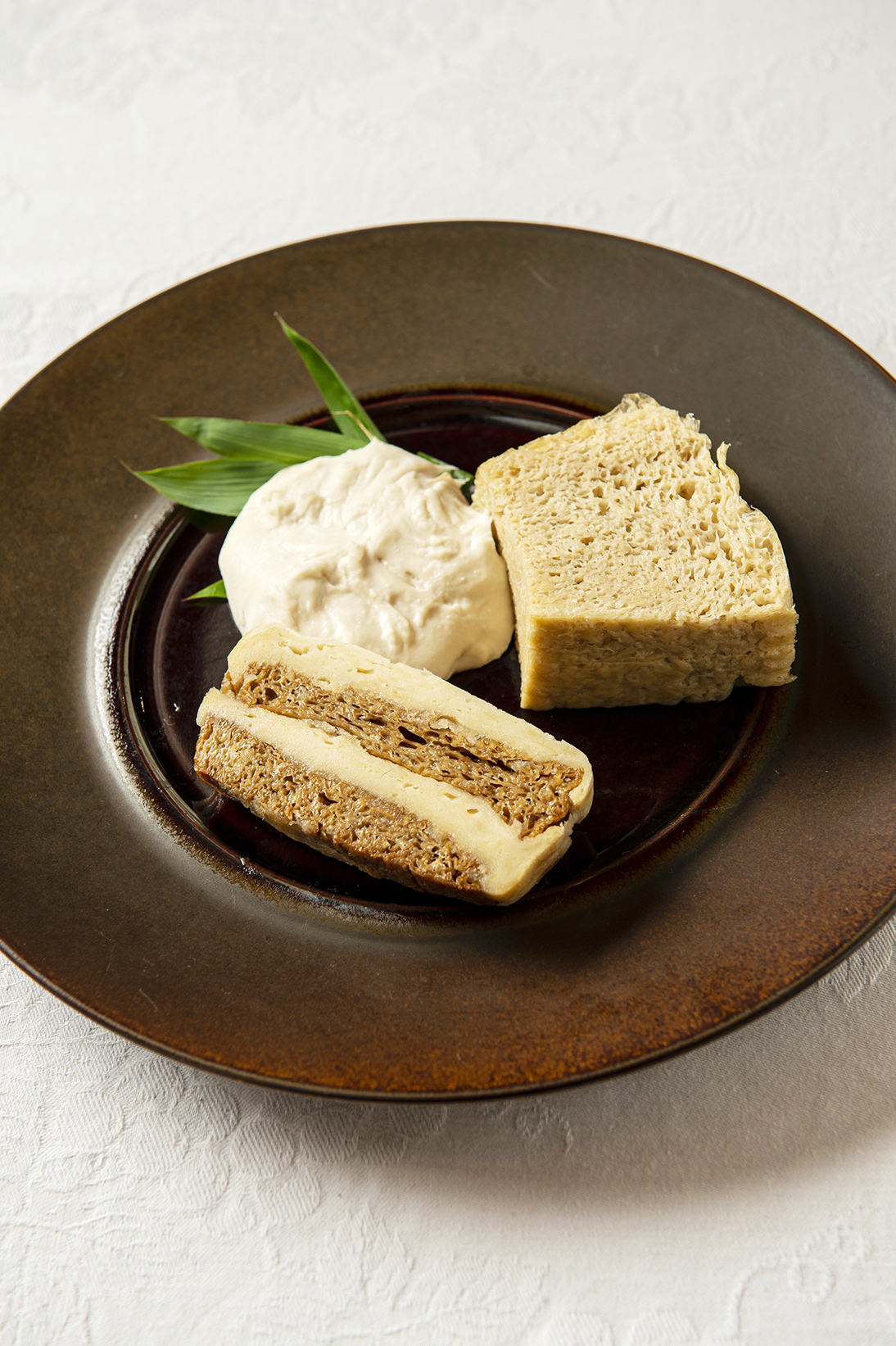
What are "Kofu" and "Namafu"? Yamanaka san showed us.
After kneading wheat flour with water and rinsing the dough balls to wash away the starch, what remains is gluten (wheat protein). This is known as 'Namafu' (raw wheat bran) on top left in the photo. We add a small amount of glutinous rice flour as a binder, making it a moist, sticky texture similar to mochi rice cakes. The baked version of this is called 'Yakifu' (baked wheat bran).
The item on the right next to it is called 'Kaofu' (roasted wheat bran). 'Kao' means 'baked' in Chinese, so is it the same as 'Yaki-fu'? I had that thought, but it seems to be different."
"This is made by fermenting 'Namafu' (raw wheat bran) before steaming. It has a sponge-like texture that allows flavors to permeate through. While not common in Japan, it's a typical ingredient in China. While we make the 'Namafu' (raw wheat bran) in-house, we have to specially source the 'Kaofu' (roasted wheat bran) as we can't produce it ourselves."
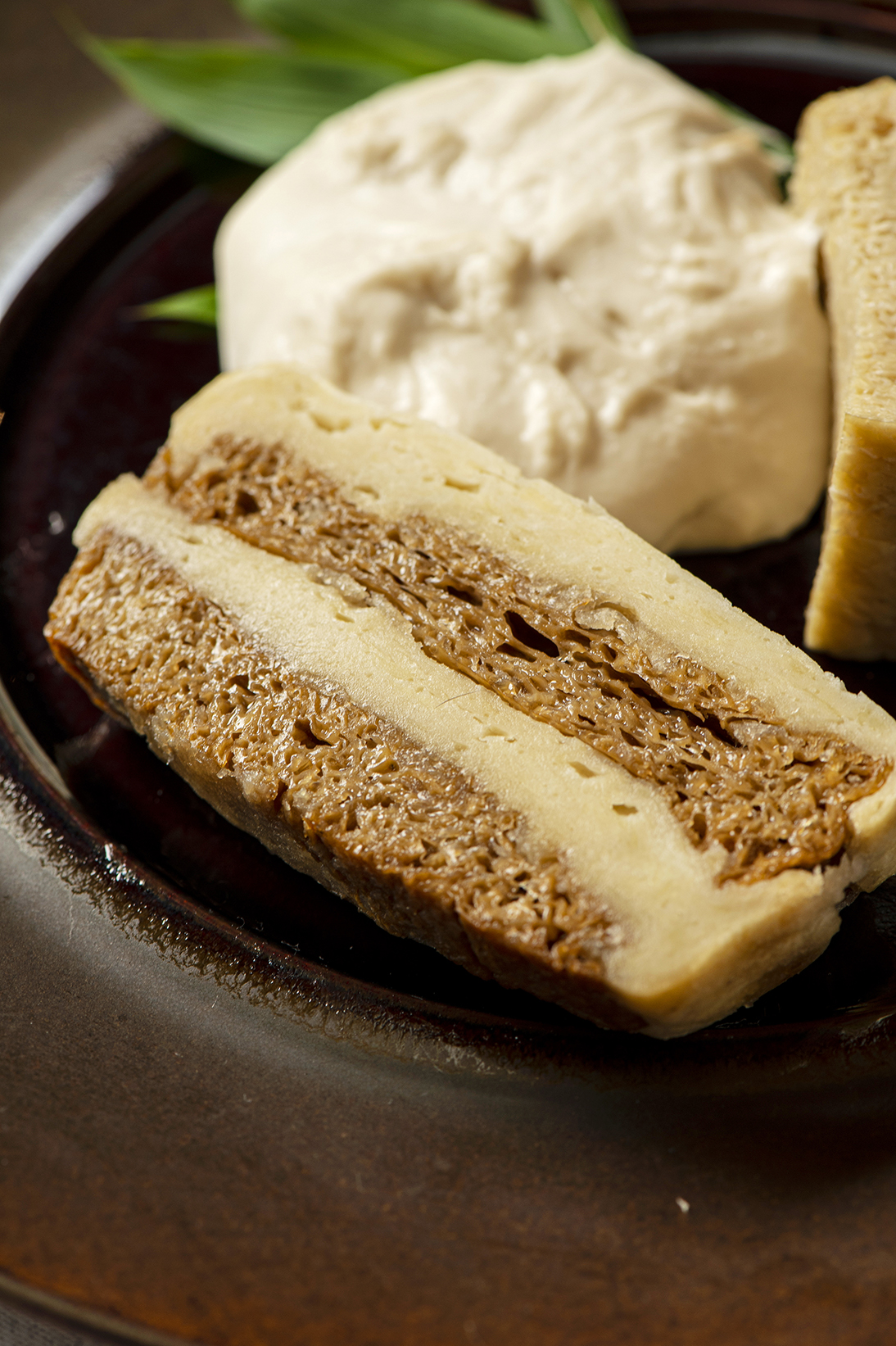
A fluffy sponge cake-like 'Kaofu', simmered in a seasoned broth for about 3 hours for flavors, then alternately layered with 'Namafu' and steamed. This dish expresses layers of rich fat and lean meat, using two types of gluten with different shapes and textures.
The steamed and shaped pork belly is fried, then finished with a glossy and thick sauce made separately with Shojin broth, sesame oil and water mixed starch.
The sauce, key to the flavor, is sweet and spicy with richness and depth. Two types of seasoned broth are prepared, one for simmering and one for finishing. The seasoned broth for simmering includes ingredients such as soybeans, shiitake mushrooms, kelp, Japanese white radish, carrots, and fava beans, and also soy sauce, Shaoxing wine (Chinese rice wine) and sugar.
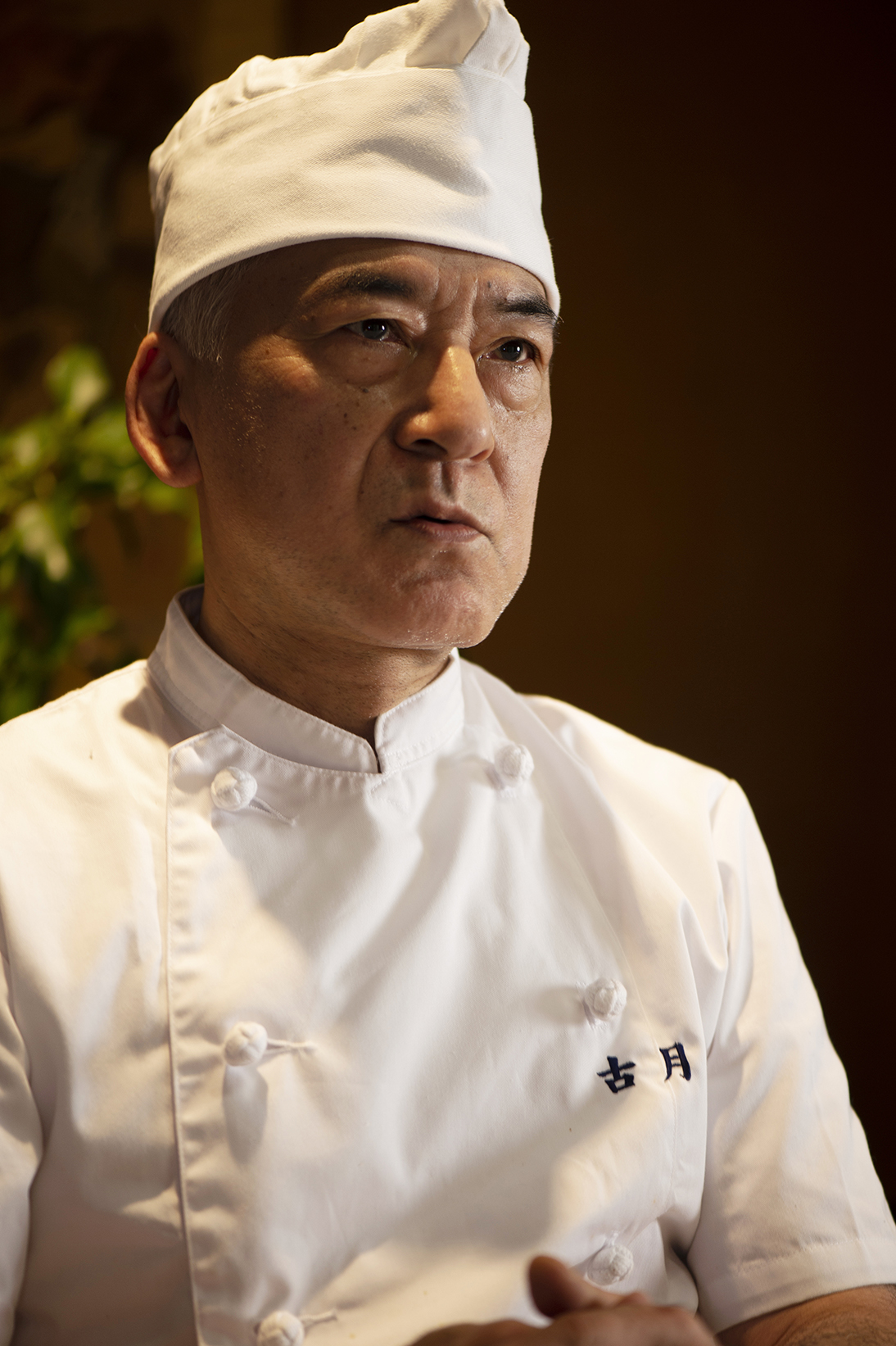
Finishing sauce is made with Shojin soup with lots of fava beans. Fava beans is a crucial ingredient to make the dish closer to meat-based flavor.
Additionally, to incorporate the sweetness of vegetables, we use not only dried ingredients but also fresh Japanese white radish and carrots.
The sweetness in the flavor comes from the vegetables. Additionally, pickled vegetables are boiled down, adding their unique aroma and umami to enhance the flavor.
'Shojin pork belly stew' is made with combining two textures of wheat bran, along with the aroma, sweetness, and umami of vegetables. Why don't you try this dish where wheat bran takes the main character, creating a moist and tender meat?
The Fascination of Chinese Shojin Cuisine
Comprising Four Philosophies
Comprising Four Philosophies
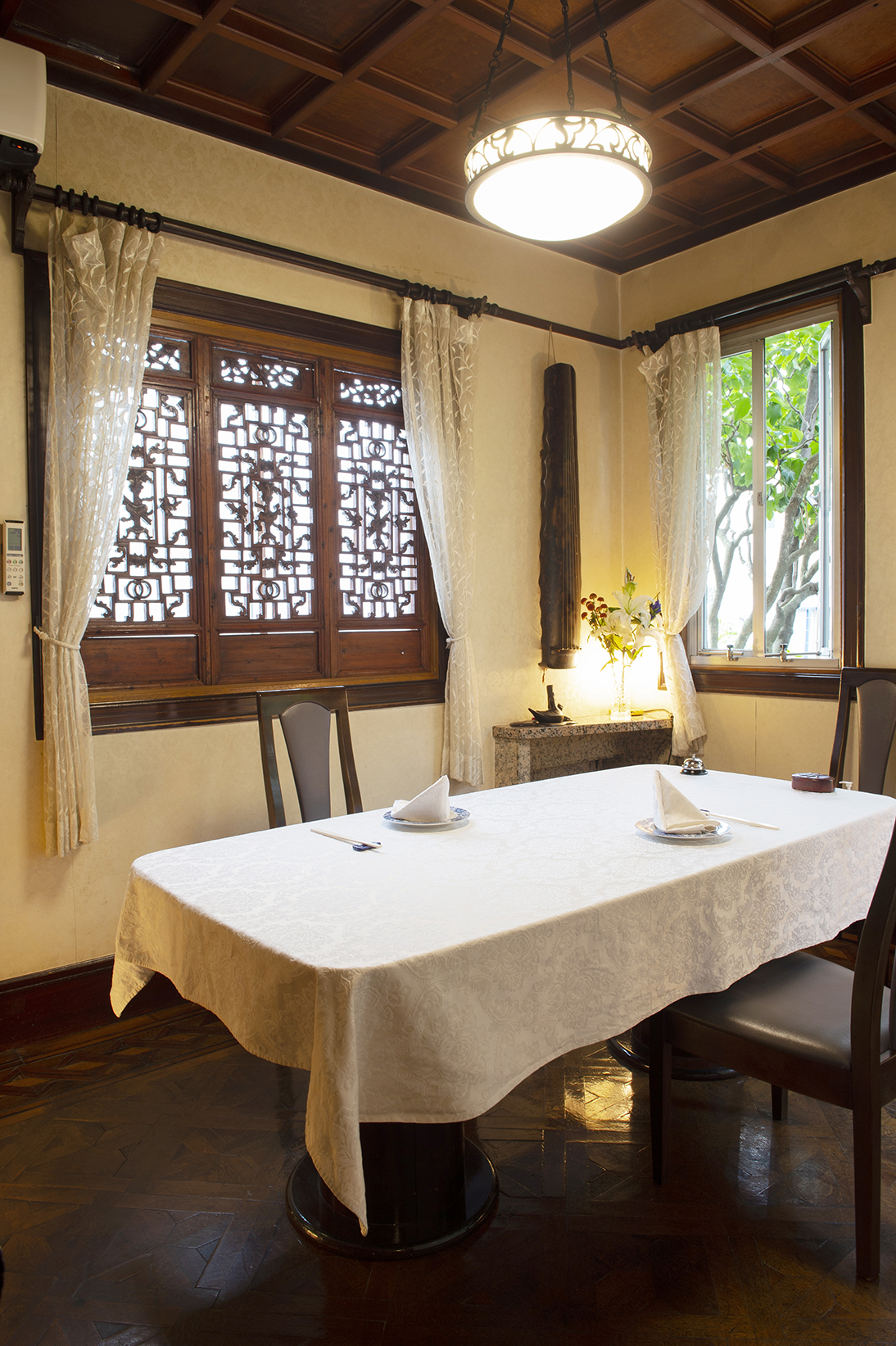
Each room at 'Kogetsu Ikenohana' offers a different atmosphere, making it a popular choice for business dinner and dining. The owner chef, Yamanaka san, has been accommodating not only traditional Chinese cuisine, but also original dishes and healthy cuisine based on Eastern oriental medicine with seasonal ingredients. He added vegan course (Shojin cuisine) to the menu about three years ago.
Inspired by Tokyo's initiatives to promote diversity in dining, particularly towards tourists from overseas and various dietary preferences such as vegetarians, vegans, and Muslims, he began to address these needs.
"Vegan cuisine, or in other words, the world of Shojin cuisine, is indeed as challenging as it is said to be "the last Shojin" for chefs. It could be said that Shojin cuisine is where chefs ultimately arrive. I have not get my hands on Shojin cuisine as it requires a lot of effort and time compared to regular cooking, and the seasoning is complex. However, now that I've reached a certain age, I've decided to take it on as my final challenge." said Yamanaka san.
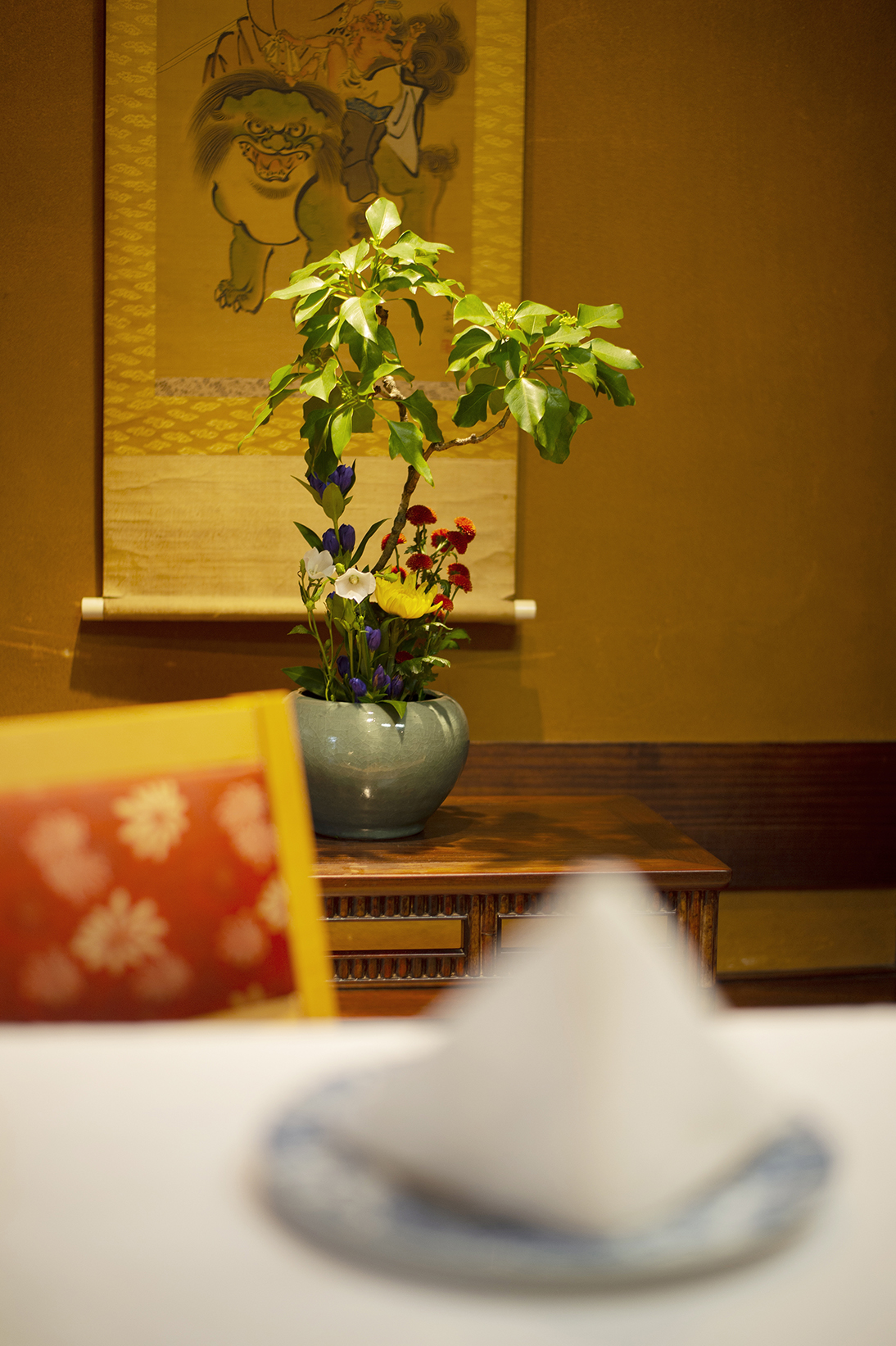
Yamanaka san majored in Chinese history in university and continued to study ingredients, effects, and cooking methods even after delving into the world of Chinese cuisine. Reflecting on his research into an old recipe cookbook called 'Soshoku Setsuryaku' (*) written in the late Qing Dynasty, he said;
"The book advocates the benefits of Shojin cuisine for health, emphasizes the need for culinary skills to prepare delicious dishes, and also aims to promote the necessity of Shojin cuisine from an animal protection perspective. I noticed the similarities with the vegan concept as I read it."
The book contains various recipes using ingredients such as wheat bran, tofu, mushrooms, and seaweed. Yamanaka san has created many vegan cuisine inspired by the research into old cookbooks including 'Shojin Pork Belly Stew,' which skillfully utilizes two types of wheat bran to represent fatty and lean parts of meat.
'The 'Soshoku Setsuryaku' (*) includes mock meat dishes using dried gourd strips, which resemble meat in texture. Indeed, the texture of dried gourd strips is similar to meat. Learning about these methods led me to rethink and use wheat bran. Even the base seasoning, the Shojin broth, is referenced from this cookbook.'
'Shojin pork belly stew' is indeed a dish born from the spirit of "Onkochishin" - learning from the past.
**Soshoku setsuryaku - Published in 1926. The editor, 'Setsu Hoshin' details such as the editor's title are unknown. 'Soshoku' refers to Shojin cuisine. 'Setsuryaku' means an abbreviated explanation or summary.
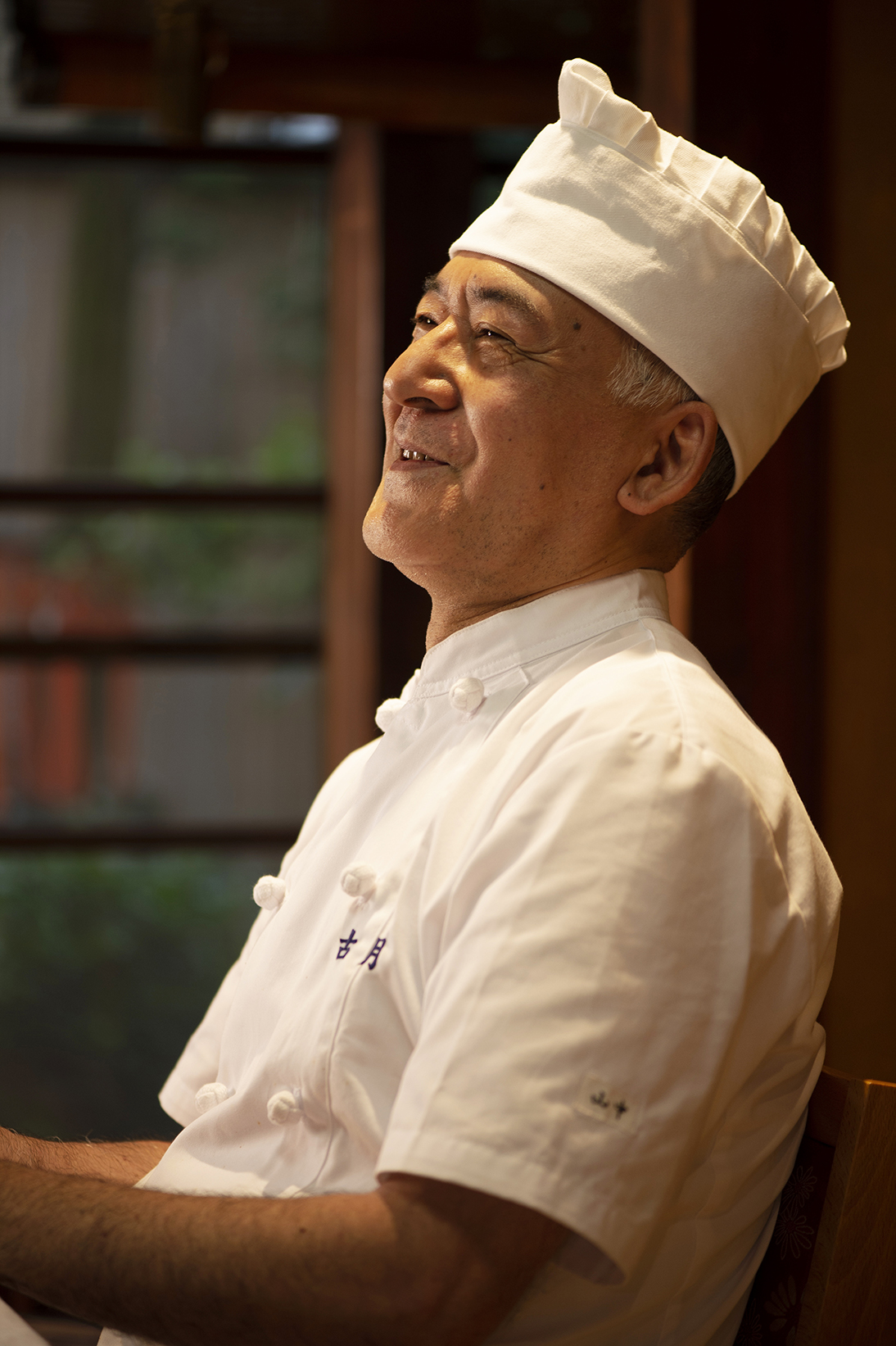
Yamanaka san also shared insights from his own research about the depth of Shojin cuisine in Chinese cuisine. He explains that Chinese Shojin cuisine is not only influenced by Buddhism but also consists of four main philosophies.
"Since the Zhou Dynasty, about a thousand years before the arrival of Buddhism from India during the Later Han Dynasty (25-220), there has been a tradition of avoiding meat and purifying the body during sacrificial periods known as 'Shojin Kessai'. Especially among high-ranking individuals such as emperors, there was a desire for luxurious and delicious dishes even during periods of Shojin Kessai, leading to the creation of mock dishes that mimic the taste and texture of meat and fish. Mock dishes evolved within the context of a court cuisine.
During the Sung Dynasty (916-1127), tastes of literati had developed and cuisine became refined and sophisticated, appealing to intellectual people. Another influence was Daoism. The pursuit of longevity and eternal youth in Daoist philosophy greatly influenced traditional Chinese medicine.
Chinese Shojin cuisine is influenced by these four philosophies: Shojin Kessai (purifying oneself), Buddhism, literary tastes, and Daoism."
The conversation expanded to the fascinating world of Chinese Shojin cuisine as we discussed about 'Shojin pork belly stew' which goes beyond Buddhism.
Yamanaka san believes that 'chef is a secret identity'. Revealing the depth and deliciousness of Chinese cuisine. You will be amazed by the richness of the flavors and excitement of Chinese cuisine ensured by Yamanaka san's research. I highly recommend the Vegan course (authentic Shojin cuisine), a culmination of his culinary mastery.
Written by Mizuho Ajihara
Photo by Satoshi Araya
PROFILE
Born in 1958 in Tokyo. Started working at "Shisen Hanten" located in Roppongi after graduated from university. He studied under Mr. Harada Osamu and later went to China. He experienced in Chinese imperial cuisine at the Fang Shan Fan Zhuang Restaurant and Shenyang Yushan Restaurant.
In Shenyang, he even had the opportunity to meet a former imperial chef who served the last emperor of the Qing Dynasty, Puyi, to learn more about imperial cuisine.
In 1990, he opened his own Chinese restaurant, 'Kogetsu' inheriting the family business of a ryokan (Japanese style hotel) and restaurant.
The name 'Kogetsu' is derived from a poem by Li Bai.
In 2006, he was awarded the title of "Master of Nutrition and Medicinal Cuisine" a national qualification in China. He serves as the Vice Chairman of the Japan-China Cuisine Association and as a Director of the Nutrition and Medicinal Cuisine Expert of Chinese Association of Traditional Chinese Medicine. He has authored books such as 'Comprehensive Dictionary of Food Efficacy Based on Chinese Traditional Medicine".
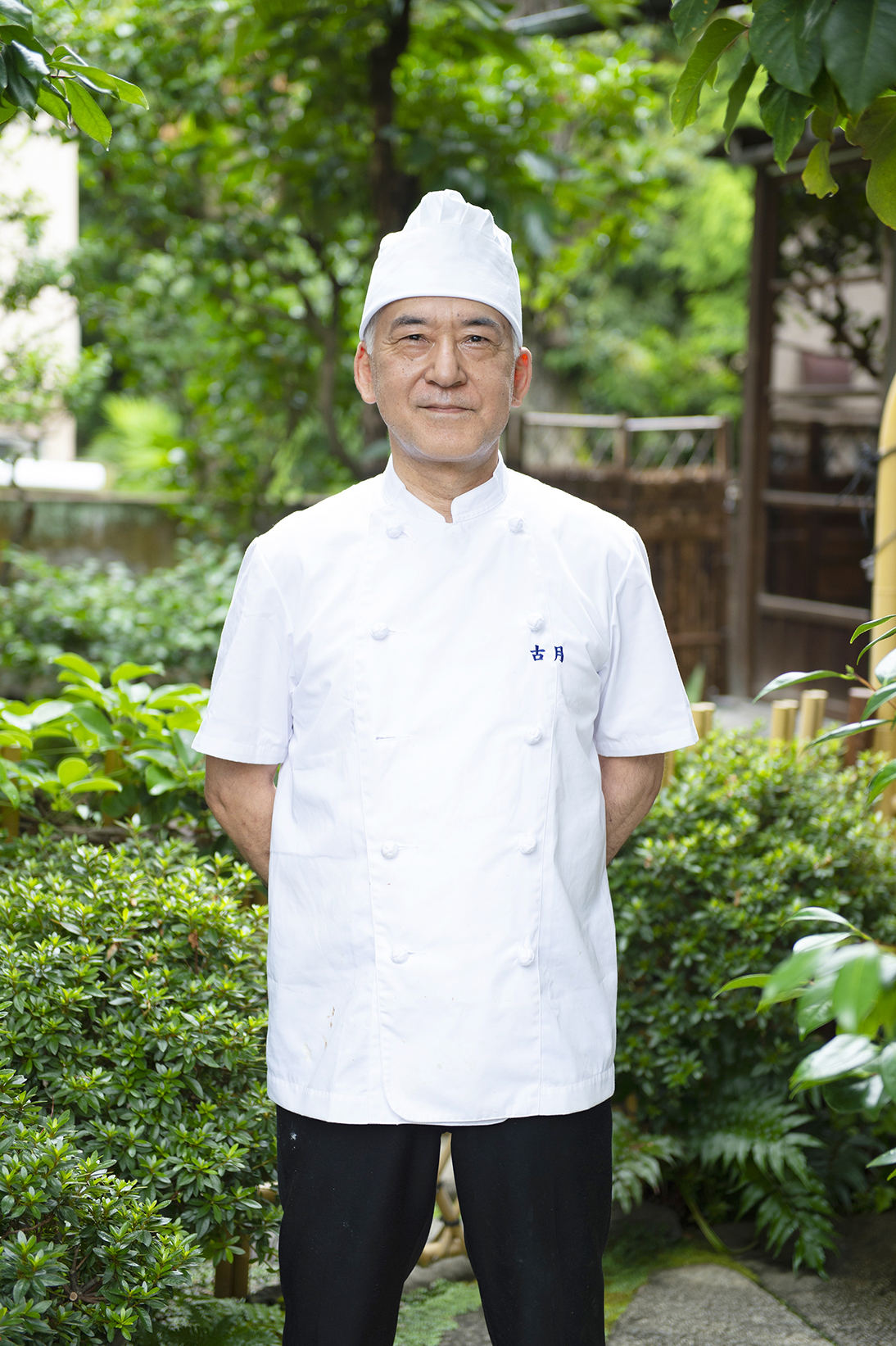
Chef's Recommended Vegetables
The changing seasons often bring about different dietary needs for the body. Mung beans for hot summer. They have diuretic effect and help to cool down the body. In Japan, mung bean sprouts and Harusame noodles, both made from mung beans, are frequently used. In China, there are even more ways to utilize them. Mung bean starch can be used to make dishes like Kuzukiri (Kuzu starch noodles), and mung bean paste or Zenzai (sweet bean soup) are also popular for their beautiful colors and delicious flavors. They are often added to Chimaki (sticky rice dumplings) as well. It can be creatively used in various dishes during this season.


